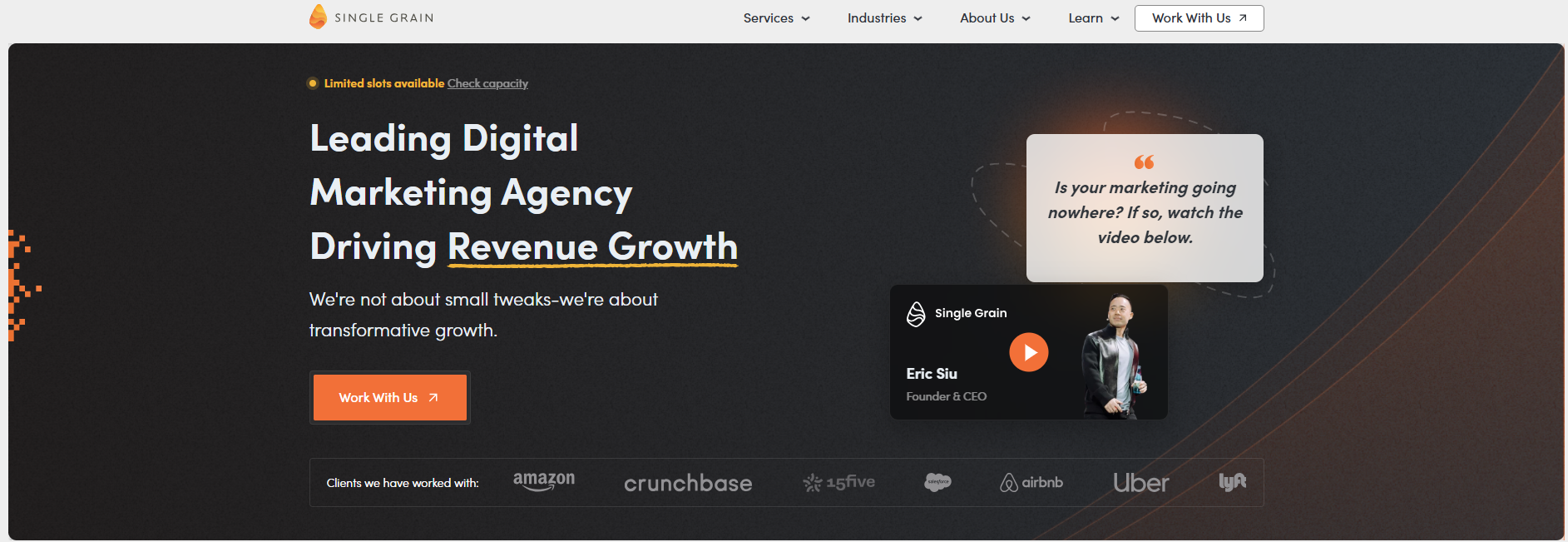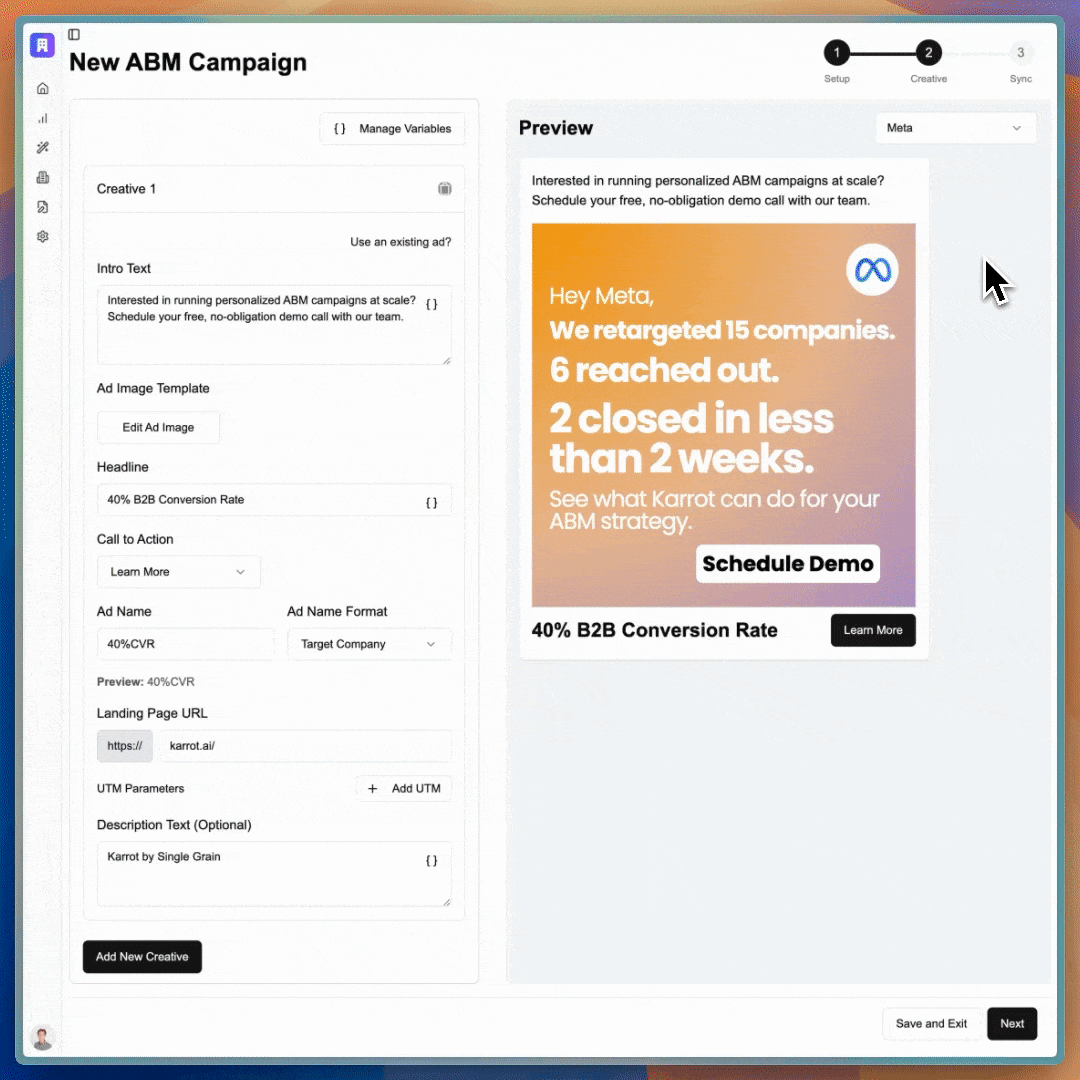How to Generate LinkedIn ABM Lookalike Audiences With AI
Your best customer just closed a $250K deal, and you’re wondering: “How do I find 100 more prospects exactly like them?” The answer lies in AI-powered LinkedIn ABM lookalike audiences. However, most marketers are still using outdated manual targeting, which leaves money on the table.
With LinkedIn’s traditional Lookalike Audiences sunset and replaced by AI-driven Predictive Audiences, marketers who master this new approach are seeing transformative results. Meanwhile, those still manually building target lists are watching competitors capture their ideal prospects with surgical precision. The power of AI-driven audience modeling on LinkedIn isn’t just impressive; it’s becoming table stakes for competitive ABM programs.
TABLE OF CONTENTS:
- Understanding LinkedIn ABM Lookalike Audiences With AI
- Why Traditional LinkedIn Targeting Falls Short in 2025
- Step-by-Step Process for Generating AI-Powered LinkedIn Lookalike Audiences
- Advanced AI Integration Strategies
- Measuring Success and ROI
- Privacy and Compliance Considerations
- Troubleshooting Common Challenges
- Future-Proofing Your AI Audience Strategy
- Transforming Your ABM Results with AI Precision
- Related Video
Understanding LinkedIn ABM Lookalike Audiences With AI
LinkedIn’s AI-powered Predictive Audiences represent a fundamental shift from static list building to dynamic audience intelligence. Unlike traditional lookalike audiences that relied on basic demographic matching, these AI models analyze over 8,000 data points per LinkedIn member to identify prospects who share behavioral patterns, professional trajectories, and engagement signals with your highest-value accounts.
The technology works by ingesting your seed audience, typically your best customers or high-intent prospects, and applying machine learning algorithms to identify similar professionals across LinkedIn’s 900+ million member base. The AI doesn’t just examine job titles and company size; it also evaluates career progression patterns, content engagement behaviors, skill development paths, and network connections to build nuanced prospect profiles.
What makes this particularly powerful for ABM is the precision it offers. Instead of casting wide nets hoping to catch quality prospects, you’re using AI to identify the specific professionals within target accounts who exhibit buying signals similar to your closed-won deals. This means higher engagement rates, shorter sales cycles, and dramatically improved ROI on your LinkedIn ad spend.
Why Traditional LinkedIn Targeting Falls Short in 2025
Manual audience building, the approach most B2B marketers still use, is fundamentally flawed in today’s complex buying environment. When you manually select job titles, company sizes, and industries, you’re making assumptions about who your ideal prospects are based on surface-level characteristics.
This leads to three critical problems:
1. You miss high-quality prospects who don’t fit your preconceived profile.
2. You waste budget on prospects who look right on paper but lack actual buying intent.
3. Your targeting can’t adapt to market changes.
| Approach | Data Points Used | Adaptation Speed | Average Conversion Rate | Setup Time |
|---|---|---|---|---|
| Manual Targeting | 5-10 (Job title, company size, industry) | Quarterly manual updates | 2.3% | 4-6 hours |
| AI Predictive Audiences | 8,000+ (Behavioral, engagement, network) | Real-time algorithmic updates | 4.4% | 30 minutes |
B2B companies that run account-based marketing on LinkedIn achieve 91% higher conversion rates than those using traditional tactics, with LinkedIn’s professional data and AI-enhanced targeting playing a crucial role in this performance boost.
Step-by-Step Process for Generating AI-Powered LinkedIn Lookalike Audiences
Creating effective LinkedIn ABM lookalike audiences with AI requires a systematic approach that strikes a balance between data quality and strategic targeting. Here’s the proven framework that top-performing ABM teams use to generate audiences that convert:
Phase 1: Seed Audience Preparation
Your seed audience quality directly determines your lookalike audience performance. Start by exporting your highest-value customers and prospects from your CRM, focusing on accounts that represent your ideal customer profile. The sweet spot for seed audience size is 300-5,000 contacts. Large enough for statistical significance but focused enough to maintain precision. Clean your data ruthlessly. Remove outdated email addresses, normalize company names (“IBM” not “International Business Machines Corp”), and verify job titles are current.
Segment your seed audiences by customer value or stage. Create separate seeds for your highest-value enterprise deals, mid-market opportunities, and high-intent prospects who haven’t purchased yet. This allows LinkedIn’s AI to build distinct lookalike models for different segments of your TAM.
Phase 2: LinkedIn Campaign Manager Setup
Navigate to LinkedIn Campaign Manager and select “Create Audience” under the Matched Audiences section. Choose “Upload a list” and carefully map your CSV fields to LinkedIn’s contact fields. Pay special attention to the email and company name mapping. These are the primary identifiers LinkedIn uses for matching.
Once your seed audience is processed (typically within 24-48 hours), create your Predictive Audience. Select “Create Audience” again, but this time choose “Predictive Audience.” Select your processed seed audience as the source and give LinkedIn’s AI permission to expand beyond your exact matches.
Configure your expansion parameters. LinkedIn allows you to control how broadly the AI expands your audience. For ABM campaigns, start with “Similar” rather than “Broad” expansion to maintain precision. You can always expand later based on performance data.
Phase 3: AI Model Optimization
LinkedIn’s AI models improve with data feedback, so your initial audience is just the starting point. Layer additional targeting criteria to refine your audience without overriding the AI insights. Geographic restrictions, seniority filters, and industry exclusions can help focus the AI’s recommendations on your most viable prospects.

Consider integrating intent data from platforms like Karrot.ai to enrich your seed audiences. One enterprise tech manufacturer saw its pipeline grow 2.1 times year-over-year and the average cost-per-marketing-qualified opportunity fall by 38% within three quarters by using intent and fit scores to identify in-market accounts before pushing them to LinkedIn Matched Audiences.
Advanced AI Integration Strategies
The most sophisticated ABM programs don’t stop at basic lookalike audiences. They create multi-layered AI systems that continuously optimize targeting based on real-time performance data. This approach separates high-performing programs from average ones.
Start by implementing dynamic audience refreshing. Set up automated workflows that update your seed audiences monthly with new closed-won deals and high-engagement prospects. This ensures your AI models continuously learn from fresh success patterns rather than relying on static historical data.
Create tiered lookalike audiences based on account value. Build separate AI models for enterprise accounts ($100K+ deals), mid-market opportunities ($25K-$100K), and SMB prospects (sub-$25K). Each segment has distinct behavioral patterns, and specialized AI models will significantly outperform generic models in these audiences.
Integrate cross-platform intelligence by combining LinkedIn’s AI insights with data from your marketing automation platform, sales engagement tools, and intent data providers. When LinkedIn identifies a high-propensity prospect, it automatically triggers personalized sequences across email, display advertising, and sales outreach.
Measuring Success and ROI
Traditional LinkedIn metrics, such as CTR and CPC, tell only part of the story. For ABM lookalike audiences, focus on pipeline metrics that directly correlate with revenue impact. Track cost-per-marketing qualified account (CPMQA), pipeline velocity from first touch to closed-won, and average deal size from AI-generated audiences versus manual targeting.
Implement proper attribution modeling to capture the full impact of your lookalike audiences. LinkedIn’s conversion tracking often misses the complex B2B buyer journey, so supplement with multi-touch attribution tools that track prospect engagement across all touchpoints.
One mid-market B2B SaaS company perfectly illustrates this measurement approach. After replacing legacy lookalikes with LinkedIn Predictive Audiences and feeding the AI with rich first-party and intent data, they achieved a 187% increase in CTR, 64% boost in conversion rate, and 42% reduction in cost-per-acquisition. Most importantly, one 15-day sprint generated $153K in closed-won revenue from $73,285 in ad spend. A 209% return on ad spend that dramatically exceeded their manual targeting benchmarks.
- Pipeline Velocity: Measure time from first LinkedIn engagement to sales-accepted lead
- Account Penetration: Track how many contacts within target accounts engage with your content
- Deal Progression: Monitor how LinkedIn-sourced leads move through your sales funnel compared to other channels
- Revenue Attribution: Calculate closed-won revenue directly attributable to AI-generated audiences
Create executive dashboards that translate these metrics into business impact. Instead of reporting “2.3% CTR on LinkedIn,” communicate “LinkedIn AI audiences generated 23% more qualified pipeline this quarter at 31% lower cost-per-opportunity than manual targeting.”
Privacy and Compliance Considerations

AI-powered audience generation operates with increasingly complex privacy regulations. Companies with strong privacy guidelines outperform competitors by 20%, making compliance not just a legal requirement but a competitive advantage.
Ensure your seed data collection includes proper consent mechanisms. Document the legal basis for processing each contact’s information, whether it’s legitimate business interest, consent, or contractual necessity. This documentation becomes crucial if prospects request information about how their data is being used.
Implement data minimization principles by only uploading the minimum contact information necessary for LinkedIn’s matching algorithms. Email address and company name are typically sufficient. Additional fields, such as phone numbers or personal details, aren’t required and increase the privacy risk.
Regular audits of your audience data help maintain compliance and trust. Quarterly reviews should check for outdated contacts, verify consent status, and remove any data that no longer meets your legal basis for processing. This proactive approach prevents compliance issues and improves audience quality.
Troubleshooting Common Challenges
Even well-designed AI lookalike audiences can face performance issues. Low match rates typically indicate data quality problems in your seed audience. If LinkedIn can only match 40-50% of your uploaded contacts, review your data formatting, update outdated information, and ensure company names match LinkedIn’s business page names exactly.
When audiences perform well initially but decline over time, it often signals that your seed data has become stale. AI models trained on six-month-old customer data may not reflect current market conditions or buying patterns. Refresh your seed audiences monthly with recent closed-won deals and high-engagement prospects.
If your lookalike audiences are too broad or attracting low-quality leads, tighten your expansion settings and add qualifying criteria. Geographic restrictions, seniority requirements, or industry filters can help focus the AI’s recommendations without completely overriding its insights.

For marketers struggling with campaign setup or optimization, consider getting expert guidance. A comprehensive audit can identify data quality issues, targeting misalignments and measurement gaps that might be limiting your results. Get a Free Audit to evaluate your current LinkedIn ABM approach and discover specific optimization opportunities.
Future-Proofing Your AI Audience Strategy
LinkedIn’s AI capabilities continue evolving rapidly, with new features and data signals being incorporated regularly. Stay ahead by participating in LinkedIn’s beta programs, which often provide early access to advanced targeting options and AI improvements.
Enhance your internal AI literacy by training your team on machine learning principles and foundational data science concepts. Understanding how algorithms make decisions helps marketers optimize their inputs more effectively and interpret results more accurately. This knowledge becomes increasingly valuable as AI features become more sophisticated.
Prepare for increased integration between LinkedIn and other business intelligence platforms. Future developments are likely to include deeper CRM integration, the incorporation of real-time intent data, and cross-platform audience syncing. Organizations with clean, well-organized data will be best positioned to leverage these advances.
Consider the broader implications of AI in your ABM strategy. As predictive audiences become more accurate, the competitive advantage shifts from having AI capabilities to using them more strategically than competitors. This means focusing on data quality, measurement sophistication, and creative application of AI insights.
Transforming Your ABM Results with AI Precision
The transition from manual LinkedIn targeting to AI-powered lookalike audiences isn’t just an incremental improvement; it’s a fundamental transformation in how B2B marketers identify and engage prospects. Companies making this shift are seeing 64% lifts in ABM performance, 91% higher conversion rates, and dramatically improved ROI on their LinkedIn investments.
The key is approaching AI audience generation as a strategic capability, not a tactical tool. This involves investing in data quality, developing measurement systems that track business impact, and continually optimizing based on performance insights. Organizations that master these fundamentals will maintain a competitive advantage as AI capabilities continue to advance.
Success requires striking a balance between automation and human insight. While AI excels at pattern recognition and scale, human marketers provide strategic direction, creative application, and business context that algorithms can’t replicate. The most effective ABM programs combine AI efficiency with human creativity to create compelling prospect experiences.
For marketing leaders ready to transform their LinkedIn ABM results, the opportunity is significant but requires commitment to data excellence and continuous optimization. The 64% performance improvements and 91% conversion rate lifts aren’t automatic; they’re the result of systematically implementing AI-powered audience strategies backed by rigorous measurement and ongoing refinement.
Start with clean seed data, implement proper tracking, and iterate based on results. Marketers who adopt this approach in 2025 will be the ones to capture market share, while competitors struggle with outdated targeting methods. Your ideal prospects are waiting to be discovered. AI makes finding them exponentially more efficient and effective.
Ready to turn your best customers into a blueprint for finding hundreds more just like them?
Related Video
Frequently Asked Questions
-
What's the optimal size for a seed audience when creating LinkedIn Predictive Audiences?
The ideal seed audience size is between 300-5,000 contacts for the best balance of statistical significance and targeting precision. This range provides enough data for LinkedIn’s AI to identify meaningful patterns while maintaining focus on your specific ideal customer profile.
-
How does LinkedIn's AI analyze prospects differently than manual targeting?
LinkedIn’s AI evaluates over 8,000 data points per member, including behavioral patterns, content engagement, career progression, and network connections, rather than just basic demographics. This comprehensive analysis identifies prospects who share similar buying signals with your best customers, even if they don’t fit traditional demographic criteria.
-
How long does it take to set up AI-powered LinkedIn lookalike audiences?
Initial setup takes approximately 30 minutes, compared to 4-6 hours for manual targeting. However, you’ll need to allow 24-48 hours for LinkedIn to process your seed audience before you can create the Predictive Audience.
-
What metrics should I track to measure the success of AI-generated audiences?
Focus on pipeline metrics like cost-per-marketing qualified account (CPMQA), pipeline velocity, and revenue attribution rather than just CTR and CPC. Track deal progression from LinkedIn-sourced leads compared to other channels, and measure account penetration within your target companies.
-
Why do my lookalike audiences perform well initially but decline over time?
This typically indicates your seed data has become stale, as AI models trained on outdated customer information may not reflect current market conditions. Refresh your seed audiences monthly with recent closed-won deals and high-engagement prospects to maintain optimal performance.
-
What data privacy considerations should I keep in mind when uploading seed audiences?
Ensure you have proper consent mechanisms and document the legal basis for processing each contact’s information. Only upload the minimum necessary data (typically email and company name) and conduct quarterly audits to remove outdated contacts and verify ongoing consent status.
-
What kind of performance improvements can I expect from switching to AI-powered audiences?
Companies typically see a 64% lift in ABM KPIs and 91% higher conversion rates compared to manual targeting methods. However, these results require commitment to data quality, proper tracking implementation, and continuous optimization based on performance insights.




